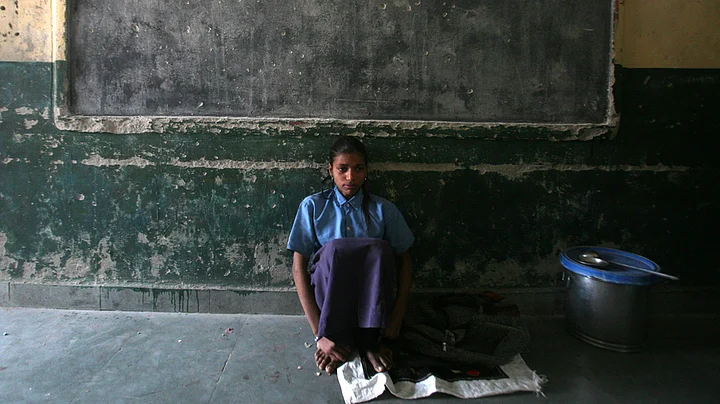Today’s developed nations are those that gave early attention to improving the quality of education, but India’s Right to Education Act says nothing about quality. The parents know better. They know that unless education leads to the acquisition of some cognitive (literacy and numeracy) skills, it is not worth it. That is why even poor parents abandon the free government schools – which have trained teachers and sometimes even have better physical infrastructure – and instead make great sacrifices to educate their children in private fee charging schools, where learning levels are typically higher.
There has been a prevalent notion in India that there is a trade-off between quantity and quality: that first we must ensure access to education (quantity), and only then can we can turn to improving the quality of education. However, this notion of a quantity-quality trade-off is patently false because in education, quantity and quality are complements: unless quality of schools is improved, children will not even attend school.
Right to Learn
India’s school enrollment rate in 2009, when the Right to Education (RTE) was enacted, was already 96.5%, i.e. nearly universal access to schooling, partly due to financial inducements to attract children to enroll in government schools, based on the provision of a free mid-day meal, free school uniform, free textbooks, and cash scholarships to designated groups. While financial inducements ensured that the enrollment rate remained at 96.5%, such inducements could not ensure meaningful access, as measured by student attendance rates: attendance rates in government schools remained pitiably low, e.g. 44% in Bihar, 56% in UP and 75% nationally.
Unfortunately, the RTE Act has a fundamentally flawed idea of what constitutes quality. It equates quality with the availability of school facilities and does not even mention the single most important indicator of quality – namely children’s learning levels.
The Act provides the children of India the Right to school facilities (classrooms, teachers, furniture, playground, books), but does not ensure children’s right to learning, or the children’s right to have teachers be present in school. It totally neglects aspects that really matter to student learning levels, namely teacher accountability.
Some Flawed Notions
The inputs-based prescriptions of the RTE Act are not evidence-based. For example, the hugely expensive prescription to maintain the Pupil Teacher Ratio as low as 30:1 (though it pleases populist state governments to dispense public largesse and create more teacher jobs), is not supported by evidence. Research internationally or in India does not support the notion that child learning improves from smaller classes below a PTR of 40:1.
A startling yet little known fact is that, as per the Act’s section 18, the quality-related norms in the Act’s Schedule do not apply to the schools that arguably need quality the most – namely the government and government-controlled (aided) schools. These recognition norms apply only to the private unaided schools which, according to official DISE data constitute only about 15% of all elementary schools in the country. There are many other models of public private partnership in education from other countries that give far better results in terms of equity and access to private schools by the children of the poor.
Bringing in Quality & Accountability
- While the enrollment rate in schools remained at 96.5%, attendance rates in government schools hit a low
- Despite RTE recommending a PTR of 30:1, research shows that learning outcomes doesn’t improve below a PTR of 40:1
- Closure of about 1 lakh low-fee budget private unaided schools on certain criteria not a wise decision
- An increase of only 1.4% in the number of government elementary schools between 2011 and 2014
- Right to Education Act 2009 woefully inadequate because it neglects the all-important quality dimension
Silent Time Bomb
The RTE Act 2009 has also actively harmed education by depriving children of their right to education by forcing the closure of about 1 lakh low-fee budget private unaided schools. The school closures have been on the grounds of non-fulfilment of the Act’s physical infrastructure norms, even though these schools are generally providing higher learning levels than government schools. This despite the fact that most government schools themselves do not fulfil the same physical infrastructure norms but are protected from closure under Section 18 of the Act!
The closure of an estimated 1 lakh low-fee private schools is a silent time bomb because it comes against the backdrop of a steeply rising student population (which rose by 38% between the 2001 and 2011 censuses), and against the backdrop that hardly any new government schools are being established: in urban India, the number of government schools actually fell since the implementation of the RTE Act 2009, as per official District Information System for Education (DISE) data.
Focus on Quality
Even in rural India, between 2011 and 2014 only 15,435 new rural government elementary schools were created, an increase of only 1.4% in the stock of government elementary schools in the country. Under the RTE Act the state governments were obligated, within a period of 3 years of the commencement of the Act, to open a primary school within a 1 km radius of every population of 300 persons and an upper primary school within a 3 km radius of every population of 800 persons.
India desperately needs a Right to Quality Education Act, one which places quality on the centre-stage. The current Right to Education Act 2009 is woefully inadequate because it neglects the all-important quality dimension. The new Right to Quality Education Act would correct the costly errors of the RTE Act 2009, and will give India a chance to fight on the global competitive stage.
(The writer is Professor and Chair of Education Economics at the Institute of Education, University College London)
(At The Quint, we question everything. Play an active role in shaping our journalism by becoming a member today.)
